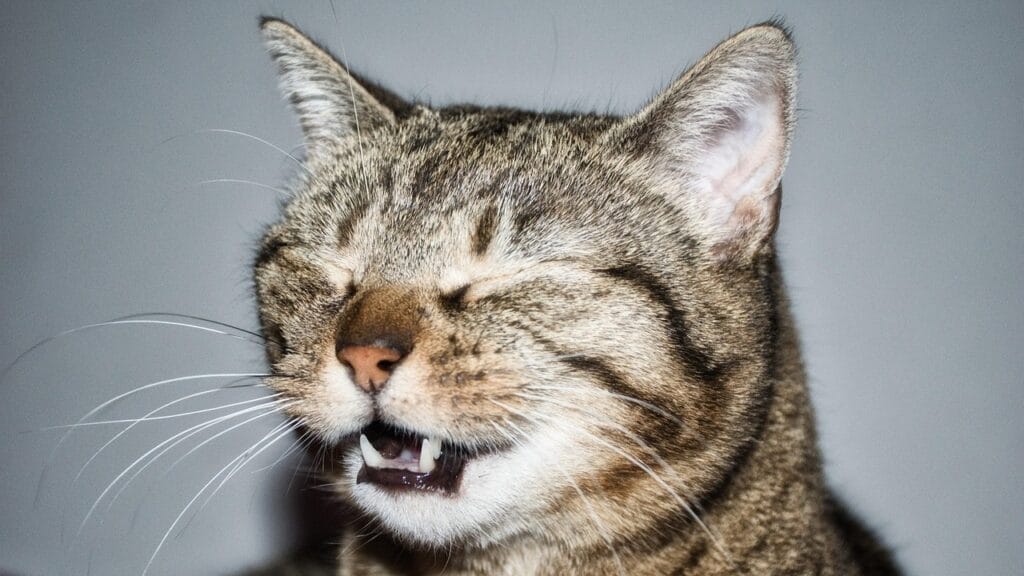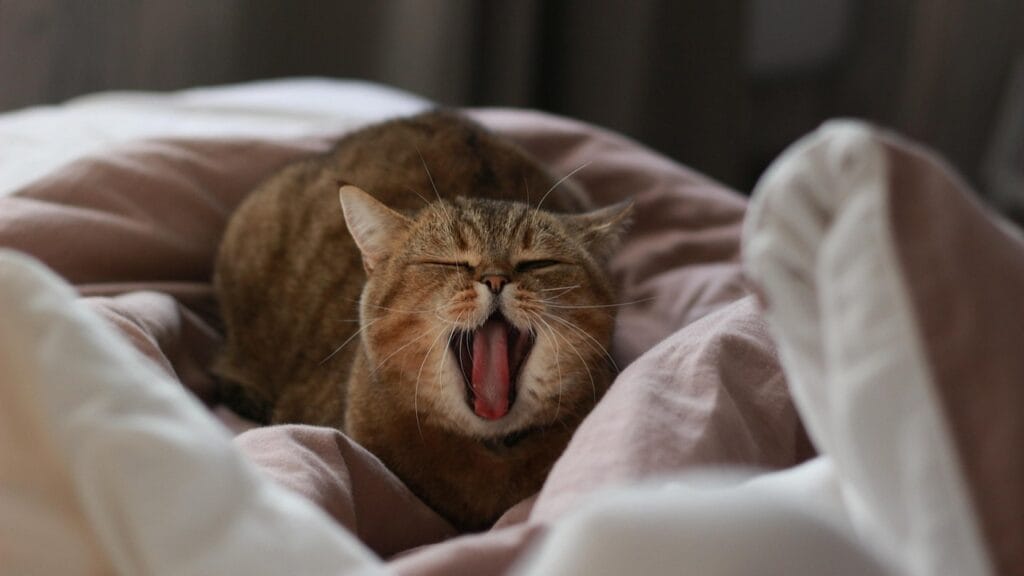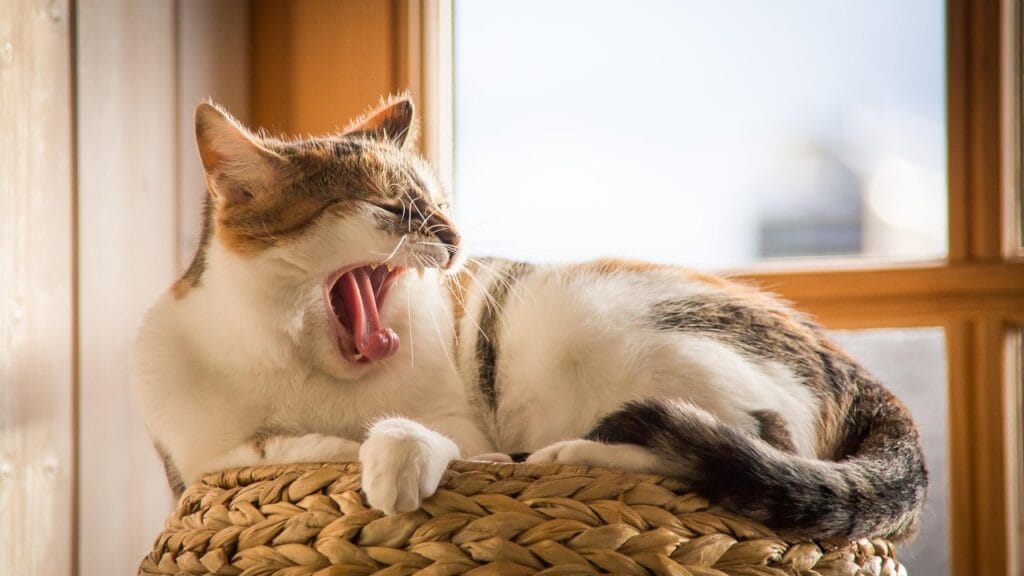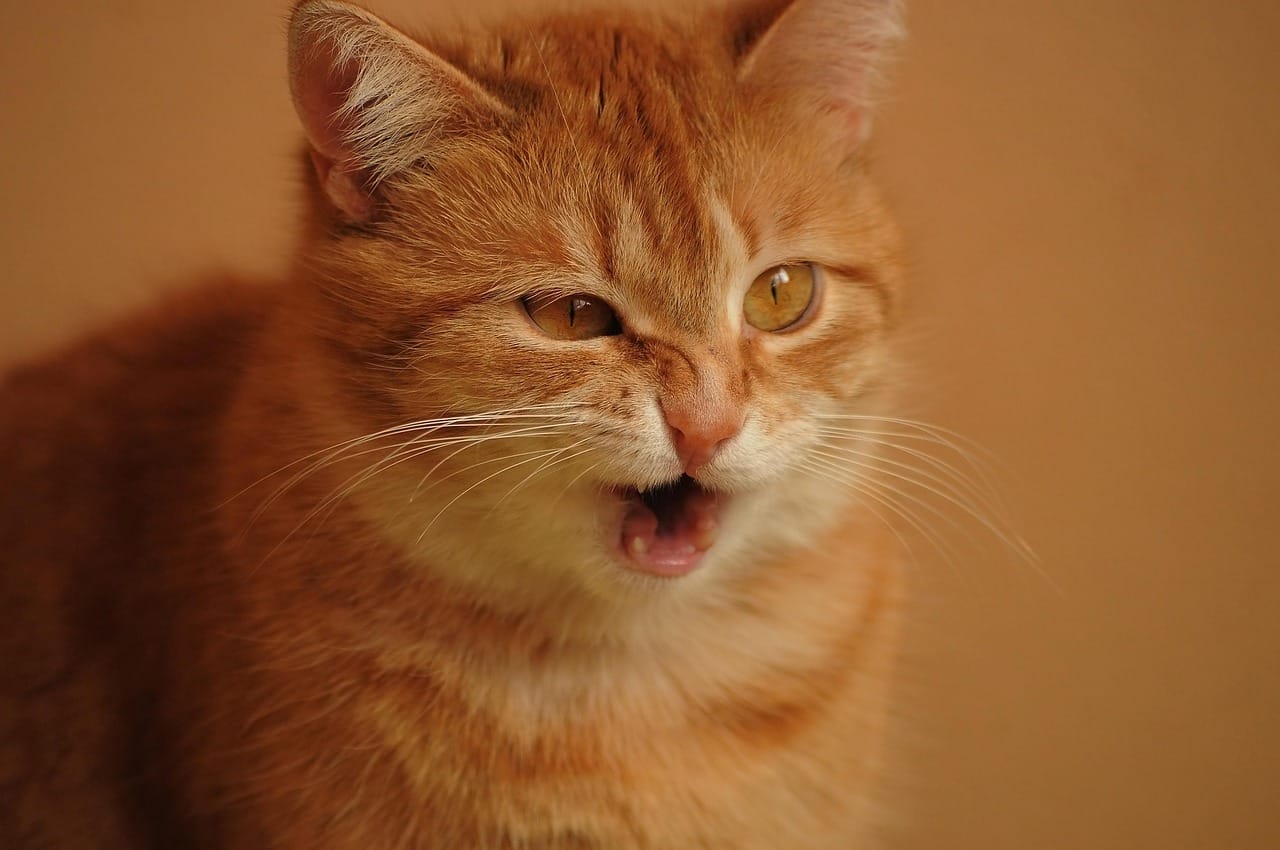Why Is My Cat Sneezing? 8 Revealing Answers to a Puzzling Question
The sound of your feline companion’s sudden sneezing fit can be both endearing and concerning. While an occasional sneeze might seem harmless, persistent or frequent sneezing warrants immediate attention. Understanding why is my cat sneezing becomes crucial for maintaining your pet’s optimal health and preventing potentially serious complications.
Feline respiratory systems are intricate networks of delicate tissues that can be easily irritated by various environmental and pathological factors. When cats sneeze repeatedly, they’re often signaling underlying issues that require careful evaluation and appropriate intervention. This comprehensive guide explores the eight most alarming causes behind feline sneezing episodes.
Table of Contents:

Understanding Normal vs. Abnormal Sneezing Patterns
Before diving into concerning causes, it’s essential to distinguish between normal and problematic sneezing behaviors. Cats naturally sneeze occasionally to clear their nasal passages of dust, pollen, or minor irritants. However, when owners repeatedly ask “why is my cat sneezing,” the pattern typically involves more frequent, persistent episodes.
Normal sneezing occurs sporadically, usually triggered by environmental irritants like cleaning products, perfumes, or dusty surfaces. These isolated incidents rarely cause concern and resolve quickly without additional symptoms.
Abnormal sneezing patterns include frequent episodes throughout the day, sneezing accompanied by discharge, difficulty breathing, or behavioral changes. These symptoms often indicate underlying medical conditions requiring veterinary evaluation.
The Anatomy of Feline Respiratory Function
Understanding feline respiratory anatomy helps explain why is my cat sneezing and how various factors affect nasal health. Cats possess complex nasal turbinates—spiral-shaped bones that warm, humidify, and filter incoming air. These structures are particularly sensitive to irritants and infections.
The feline nasal cavity connects directly to the sinuses, creating pathways where infections and inflammations can spread rapidly. This anatomical arrangement makes cats susceptible to upper respiratory complications that manifest as persistent sneezing.
Cause 1: Upper Respiratory Infections (URI)
Upper respiratory infections represent the most common answer to why is my cat sneezing. These infections, often viral in nature, affect the nasal passages, sinuses, and sometimes the eyes and throat. Feline herpesvirus and calicivirus are primary culprits in URI development.
Viral Etiology and Transmission
Feline herpesvirus type 1 (FHV-1) causes lifelong infections that can reactivate during stress, illness, or immune system compromise. Calicivirus presents similarly but may also cause oral ulcerations and lameness in some cases.
These viruses spread through direct contact, airborne droplets, and contaminated surfaces. Multi-cat environments, shelters, and catteries experience higher transmission rates due to close quarters and shared resources.
Clinical Manifestations
URI symptoms extend beyond sneezing to include nasal discharge, eye discharge, fever, lethargy, and reduced appetite. The discharge may progress from clear and watery to thick and purulent as secondary bacterial infections develop.
Treatment Protocols
Veterinary treatment typically involves supportive care, including fluid therapy, nutritional support, and environmental humidity management. Antiviral medications may be prescribed in severe cases, while secondary bacterial infections require antibiotic intervention.
Cause 2: Allergic Rhinitis and Environmental Sensitivities
Environmental allergies provide another compelling explanation for why is my cat sneezing. Cats can develop hypersensitivity reactions to various airborne allergens, including pollen, dust mites, mold spores, and household chemicals.
Seasonal vs. Perennial Allergies
Seasonal allergies typically correlate with specific times of year when particular pollens are prevalent. Spring tree pollens, summer grass pollens, and fall weed pollens can trigger sneezing episodes in sensitive cats.
Perennial allergies persist year-round and often involve indoor allergens like dust mites, mold, or chemical irritants. These cases may show less obvious seasonal variation but maintain consistent symptom patterns.
Diagnostic Approaches
Allergy testing through intradermal skin tests or serum-based allergen panels can identify specific triggers. Elimination trials involving environmental modifications may also help pinpoint problematic substances.
Cause 3: Foreign Body Obstructions
Foreign objects lodged in nasal passages create mechanical irritation that explains why is my cat sneezing in some cases. Common culprits include grass seeds, small toys, food particles, or plant material that cats encounter during outdoor exploration or indoor play.
Recognition and Emergency Signs
Foreign body obstructions often cause sudden onset sneezing, pawing at the face, nasal discharge from one nostril, and visible distress. These situations constitute veterinary emergencies requiring immediate professional intervention.
Removal Techniques
Veterinary removal typically requires sedation or anesthesia to ensure safe extraction without pushing the object deeper. Specialized instruments like otoscopes or rhinoscopes allow visualization and careful retrieval of embedded foreign materials.
Cause 4: Nasal Polyps and Masses
Benign or malignant growths within nasal passages can obstruct airflow and irritate surrounding tissues, leading to chronic sneezing. These masses explain why is my cat sneezing persistently despite treatment for other conditions.
Polyp Development
Inflammatory polyps develop from chronic irritation or infection, creating grape-like growths that partially block nasal passages. These benign masses can grow large enough to cause significant breathing difficulties.
Neoplastic Considerations
Malignant tumors, though less common, can develop within nasal passages or sinuses. These growths often present with unilateral nasal discharge, facial swelling, and progressive breathing difficulties.

Cause 5: Dental Disease and Oral-Nasal Connections
Advanced dental disease can create communications between oral and nasal cavities, resulting in chronic sneezing episodes. This connection explains why is my cat sneezing in cases where oral health problems seem unrelated to respiratory symptoms.
Pathophysiology of Oronasal Fistulas
Severe periodontal disease can erode the thin bone separating tooth roots from nasal passages. This creates abnormal openings that allow food particles, bacteria, and oral debris to enter nasal cavities.
Clinical Recognition
Cats with oronasal fistulas often present with malodorous nasal discharge, food particles visible in nasal discharge, and concurrent signs of dental disease like halitosis and difficulty eating.
Surgical Intervention
Treatment requires comprehensive dental evaluation, tooth extraction if necessary, and surgical closure of oronasal communications. Proper oral hygiene maintenance prevents recurrence in susceptible individuals.
Cause 6: Fungal Infections and Mycotic Rhinitis
Fungal infections represent less common but serious causes of chronic sneezing. Cryptococcus and Aspergillus species can colonize nasal passages, creating persistent inflammation that explains why is my cat sneezing despite antibiotic treatment.
Fungal Pathogenesis
Opportunistic fungi thrive in moist, warm environments like nasal passages, particularly in immunocompromised cats. These organisms can cause destructive infections that erode nasal tissues and create chronic discharge.
Diagnostic Challenges
Fungal infections require specialized diagnostic techniques including cytology, culture, and sometimes tissue biopsy for definitive identification. Standard bacterial cultures may miss fungal organisms entirely.
Antifungal Treatment
Systemic antifungal medications like itraconazole or fluconazole provide effective treatment, though therapy duration may extend for several months to ensure complete organism elimination.
Cause 7: Chronic Sinusitis and Secondary Complications
Chronic sinusitis develops when acute infections persist or recur repeatedly, creating permanent structural changes within nasal passages. This condition provides a frustrating answer to why is my cat sneezing when acute treatments fail to provide lasting relief.
Pathological Changes
Chronic inflammation causes tissue thickening, decreased ciliary function, and impaired drainage. These changes create environments where bacteria and other pathogens can persist despite treatment attempts.
Management Strategies
Treatment involves long-term antibiotic therapy, anti-inflammatory medications, and supportive care including nasal saline flushes. Some cases require surgical intervention to restore normal drainage patterns.
Cause 8: Irritant Exposure and Chemical Sensitivities
Chemical irritants in household environments can trigger persistent sneezing episodes, explaining why is my cat sneezing in homes with strong cleaning products, air fresheners, or tobacco smoke exposure.
Common Household Irritants
Bleach, ammonia-based cleaners, aerosol sprays, candles, and cigarette smoke commonly trigger feline respiratory irritation. Even seemingly mild scents can cause problems in sensitive individuals.
Environmental Modification
Creating irritant-free environments involves switching to pet-safe cleaning products, eliminating aerosols, improving ventilation, and maintaining smoke-free homes. These changes often provide immediate symptom relief.

Advanced Diagnostic Procedures
When basic treatments fail to address persistent sneezing, advanced diagnostic procedures help identify underlying causes. These techniques provide detailed information about nasal structure and function that explains why is my cat sneezing despite initial interventions.
Rhinoscopy and Endoscopic Evaluation
Rhinoscopy involves inserting a small camera into nasal passages to visualize internal structures directly. This procedure can identify foreign bodies, masses, structural abnormalities, and tissue inflammation patterns.
Advanced Imaging Studies
CT scans and MRI studies provide detailed cross-sectional images of nasal passages, sinuses, and surrounding structures. These studies excel at identifying masses, bone destruction, and soft tissue changes invisible on standard radiographs.
Tissue Biopsy and Histopathology
When masses or unusual tissue changes are identified, biopsy samples provide definitive diagnosis through microscopic examination. Histopathology can distinguish between inflammatory, infectious, and neoplastic conditions.
Treatment Approaches and Management Strategies
Successful treatment depends on accurate diagnosis and appropriate intervention selection. Understanding why is my cat sneezing guides treatment choice and helps establish realistic expectations for recovery timelines.
Symptomatic vs. Definitive Treatment
Symptomatic treatments provide comfort and support while addressing underlying causes. These may include humidifiers, saline nasal drops, and anti-inflammatory medications.
Definitive treatments target specific underlying conditions with antibiotics, antifungals, surgical intervention, or allergen avoidance as appropriate for the diagnosed condition.
Long-term Management Considerations
Chronic conditions may require ongoing management rather than complete cure. Regular monitoring, medication adjustments, and environmental modifications help maintain quality of life in affected cats.
Prevention Strategies and Environmental Management
Proactive prevention strategies reduce the likelihood of developing conditions that cause persistent sneezing. Understanding why is my cat sneezing helps identify preventable risk factors in your cat’s environment.
Vaccination Protocols
Appropriate vaccination schedules help prevent viral upper respiratory infections that commonly cause sneezing. Core vaccines should be maintained according to veterinary recommendations throughout your cat’s life.
Environmental Optimization
Maintaining clean, well-ventilated environments with minimal chemical irritants reduces respiratory stress. Regular cleaning with pet-safe products and proper humidity levels support optimal nasal health.
Stress Reduction
Chronic stress suppresses immune function and can reactivate latent viral infections. Providing stable environments, adequate resources, and minimizing stressful situations supports overall respiratory health.
When to Seek Emergency Veterinary Care
Certain sneezing presentations require immediate veterinary attention rather than home management. Recognizing these emergency situations ensures appropriate timing of professional intervention when asking why is my cat sneezing becomes urgent.
Red Flag Symptoms
Open-mouth breathing, blue-tinged gums, excessive drooling, facial swelling, or bloody nasal discharge indicate emergency situations requiring immediate veterinary evaluation.
Progressive Symptom Patterns
Rapidly worsening symptoms, inability to eat or drink, or severe lethargy alongside sneezing episodes warrant urgent professional assessment regardless of initial cause suspicions.
Prognosis and Long-term Outlook
Treatment success and long-term prognosis depend heavily on underlying cause identification and appropriate intervention timing. Most conditions causing persistent sneezing respond well to proper treatment when diagnosed early.
Factors Affecting Recovery
Age, overall health status, immune system function, and treatment compliance significantly influence recovery outcomes. Younger, healthier cats typically respond more favorably to treatment interventions.
Quality of Life Considerations
Even cats with chronic conditions can maintain excellent quality of life through appropriate management strategies. Regular veterinary monitoring and treatment adjustments help optimize comfort and function.
Building a Strong Veterinary Partnership
Establishing open communication with your veterinary team facilitates early problem identification and appropriate treatment selection. This partnership proves invaluable when determining why is my cat sneezing requires professional evaluation.
Monitoring and Documentation
Keeping detailed records of sneezing frequency, triggers, associated symptoms, and treatment responses helps veterinarians make accurate diagnoses and treatment recommendations.
Follow-up Care Importance
Regular follow-up appointments ensure treatment effectiveness and allow for necessary adjustments. Many respiratory conditions require monitoring and modification of treatment protocols over time.
Conclusion
Understanding why is my cat sneezing requires careful evaluation of multiple potential causes ranging from simple environmental irritants to serious medical conditions. The eight alarming causes explored in this comprehensive guide highlight the importance of professional veterinary evaluation for persistent or concerning sneezing episodes.
Early recognition and appropriate treatment of underlying conditions can prevent serious complications and maintain your cat’s optimal health and comfort. Remember that while occasional sneezing may be normal, persistent patterns warrant careful investigation to ensure your feline companion receives necessary care.
Building awareness of potential causes, maintaining preventive care protocols, and establishing strong veterinary relationships create the foundation for successful management of feline respiratory health. With proper attention and care, most cats experiencing sneezing episodes can return to comfortable, healthy lives.
FAQ
How many sneezes per day are considered normal for cats?
Occasional sneezing (1-2 times per day) is usually normal, especially if triggered by dust or scents. However, frequent sneezing episodes (multiple times per hour) or daily persistent sneezing patterns indicate potential health issues requiring veterinary evaluation.
Can I give my cat human allergy medications for sneezing?
Never give human medications to cats without veterinary approval, as many are toxic to felines. Cats require specific dosages and formulations of antihistamines or other medications that only veterinarians can safely prescribe based on individual health status.
Should I be worried if my cat only sneezes from one nostril?
Unilateral (one-sided) nasal discharge or sneezing often indicates localized problems like foreign bodies, infections, or masses. This pattern is more concerning than bilateral symptoms and warrants prompt veterinary examination to rule out serious conditions.
How long should I wait before seeing a vet for my cat’s sneezing?
Seek veterinary care within 24-48 hours if sneezing is frequent, accompanied by discharge, or affects eating and drinking. Emergency care is needed immediately if your cat shows difficulty breathing, open-mouth breathing, or bloody nasal discharge.
Did you enjoy this article?
Help other pet lovers benefit too — Share it on social media! 🐾💚


Leave a Reply